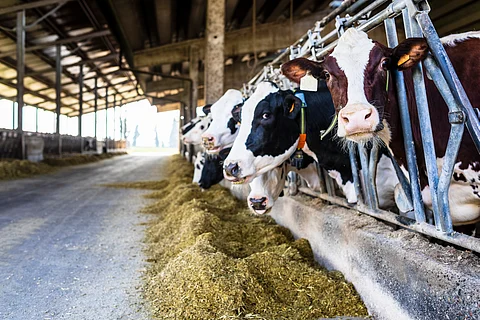

A spillover of the second H5N1 avian flu genotype in dairy cattle has been confirmed by the US Department of Agriculture (USDA) Animal and Plant Health Inspection Service (APHIS).
Until now, all H5N1 detections in dairy cattle have involved highly pathogenic avian influenza (HPAI) H5N1 clade 2.3.4.4b, genotype B3.13. This genotype is known for causing mild infections in dairy workers.
The B3.13 spillover from wild birds to dairy cattle was first reported in late 2023 or early 2024.
The B3.13 genotype has spread widely in cattle across the United States, infecting more than 900 herds in 16 states, as well as other animals, such as cats, skunks, and poultry.
Now, genotype D1.1, which is common in poultry and wild birds, has been detected in dairy cattle.
The new spillover was identified in four dairy herds in Churchill County, Nevada.
Infections of genotype D1.1 in humans have resulted in a fatality in a Louisiana resident who contracted the virus from infected backyard birds, and a severe case in a teenager from British Columbia, Canada. The teenager has since recovered.
Symptoms of H5N1 caused by genotype D1.1 are similar to those caused by the B3.13 genotype, and include fever, reduced milk production, decreased feeding, as well as other physical signs such as coughing, sneezing, and a runny nose.
“Genotype D1.1 represents the predominant genotype in the North American flyways this past fall and winter, and has been identified in wild birds, mammals, and spillovers into domestic poultry,” APHIS said in a statement.
The US-based Centre for Infectious Disease Research and Policy (CIDRAP) stated, “The new spillover was detected during an investigation that followed the confirmation of H5N1 in milk samples from Nevada dairy cows.”
Nevada had reported its first H5N1 infection in dairy cows in December 2024 from Nye County, located northwest of Las Vegas.
In 2024, the Nevada Department of Wildlife reported that several thousand birds from migrating species moved from northern Nevada to the south for the winter. It warned that aggressive European starlings could outcompete native birds for nesting sites and potentially spread diseases among livestock.
In November 2024, the USDA's APHIS detected the D1.2 genotype in pigs and poultry at a backyard farm in Crook County, Oregon.
In January 2025, the UK detected its first case of human infection with H5N1 genotype D1.2 after prolonged contact with infected birds at a farm.
In a statement, University of Minnesota epidemiologist Michael Osterholm, director of CIDRAP, said, “We shouldn’t be surprised by a new spillover to cattle, given the very significant activity in waterfowl across much of the United States.”
He added that the virus is unlikely to disappear, contrary to those who thought B3.13 would burn itself out.
Since 2024, 68 human infections of H5N1 have been reported in the USA, of which 40 have been contracted from dairy cattle, 23 from poultry farms, and the remaining four from other animals or unknown exposures.